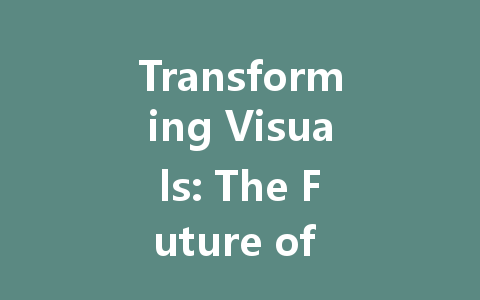
As technology continues to evolve at a rapid pace, transparent LED displays are emerging as one of the most fascinating innovations in visual technology. These cutting-edge displays not only provide high-quality visuals but also seamlessly blend into their surroundings, offering versatility that traditional displays simply cannot match. In this article, we will explore what transparent LED displays are, their applications, benefits, and the future of this exciting technology.
What Are Transparent LED Displays?
Transparent LED displays are a type of digital screen that utilizes LED technology to create images and video while allowing light to pass through. This means that from a distance, the display appears almost invisible, creating an effect where the viewer can see the content being displayed without obstructing the view behind it. These displays maintain a high level of transparency (typically around 70% to 90%) and can be integrated into a variety of surfaces, including windows and walls.
Applications of Transparent LED Displays
The applications for transparent LED displays are vast and varied. Here are some of the most promising uses:
Retail Environments
One of the most popular uses for transparent LED technology is in retail. Stores can use these displays to showcase products and advertisements without blocking the view of merchandise behind them. For example, a store window could feature an attractive ad while still allowing potential customers to see inside the shop. This creates an engaging shopping experience that encourages foot traffic.
Corporate Spaces
Transparent LED displays are also gaining traction in corporate environments, where they can be used for presentations or digital signage. They can be installed in conference rooms, lobbies, or even on office walls to display important information or branding messages. Given their sleek and modern look, they help uphold the aesthetic of a contemporary office environment.
Art Installations
Artists and designers are increasingly using transparent LED displays to create unique art installations. These displays can blend visual art with digital media, allowing a dynamic interplay between the physical and the virtual. By incorporating video and graphics, artists can create experiences that captivate audiences in a completely new way.
Automotive Industry
Transparent LED displays have also made their way into the automotive sector, where they can be used in car windows or dashboards. This technology can display navigation instructions, music information, or even vehicle diagnostics without taking the driver’s attention away from the road.
Benefits of Transparent LED Displays
There are numerous benefits associated with using transparent LED displays, which contribute to their growing popularity.
Enhanced Visual Appeal
One of the main advantages of transparent LED displays is their aesthetic appeal. They offer a modern, sleek design that can enhance the look of any space. When integrated into environments such as retail locations, they create an eye-catching visual without sacrificing legibility or attractiveness.
Greater Versatility
Transparent LED displays can be used in various applications, from commercial advertising to artistic installations. Their adaptability makes them suitable for a wide range of industries, allowing businesses to convey messages effectively while maintaining a stylish appearance.
Improved Customer Engagement
By displaying relevant and dynamic content, transparent LED displays can significantly improve customer engagement. In retail settings, for example, businesses can easily update promotions or advertisements in real-time, ensuring customers receive the most current information.
Energy Efficiency
With the use of LED technology, transparent displays are often more energy-efficient compared to traditional displays. LEDs consume less power and have a longer lifespan, offering both sustainability and cost savings for businesses and consumers alike.
The Future of Transparent LED Displays
The future of transparent LED display technology is bright, with ongoing advancements expected to enhance their functionality and applications even further. As the technology matures, we can anticipate improvements such as:
Increased Transparency Levels
As manufacturers refine the technology, we may see an increase in the transparency of these displays, allowing for even more seamless integration into different environments.
Interactive Features
Future iterations of transparent LED displays may include touch-sensitive technology, enabling users to interact with the display directly. This would open up a new world of possibilities for user engagement, especially in retail and hospitality settings.
Affordable Options
As demand for transparent LED technology grows, competition among manufacturers may lead to reductions in cost, making these displays more accessible to small businesses and individual consumers.
Conclusion
Transparent LED displays represent a significant step forward in visual technology, combining functionality and aesthetics in a unique way. With applications spanning numerous industries—from retail to automotive—these displays provide versatile solutions that engage and captivate audiences. As the technology continues to evolve, we can expect to see even more innovative uses and developments that will transform the way we experience visuals in our everyday lives.